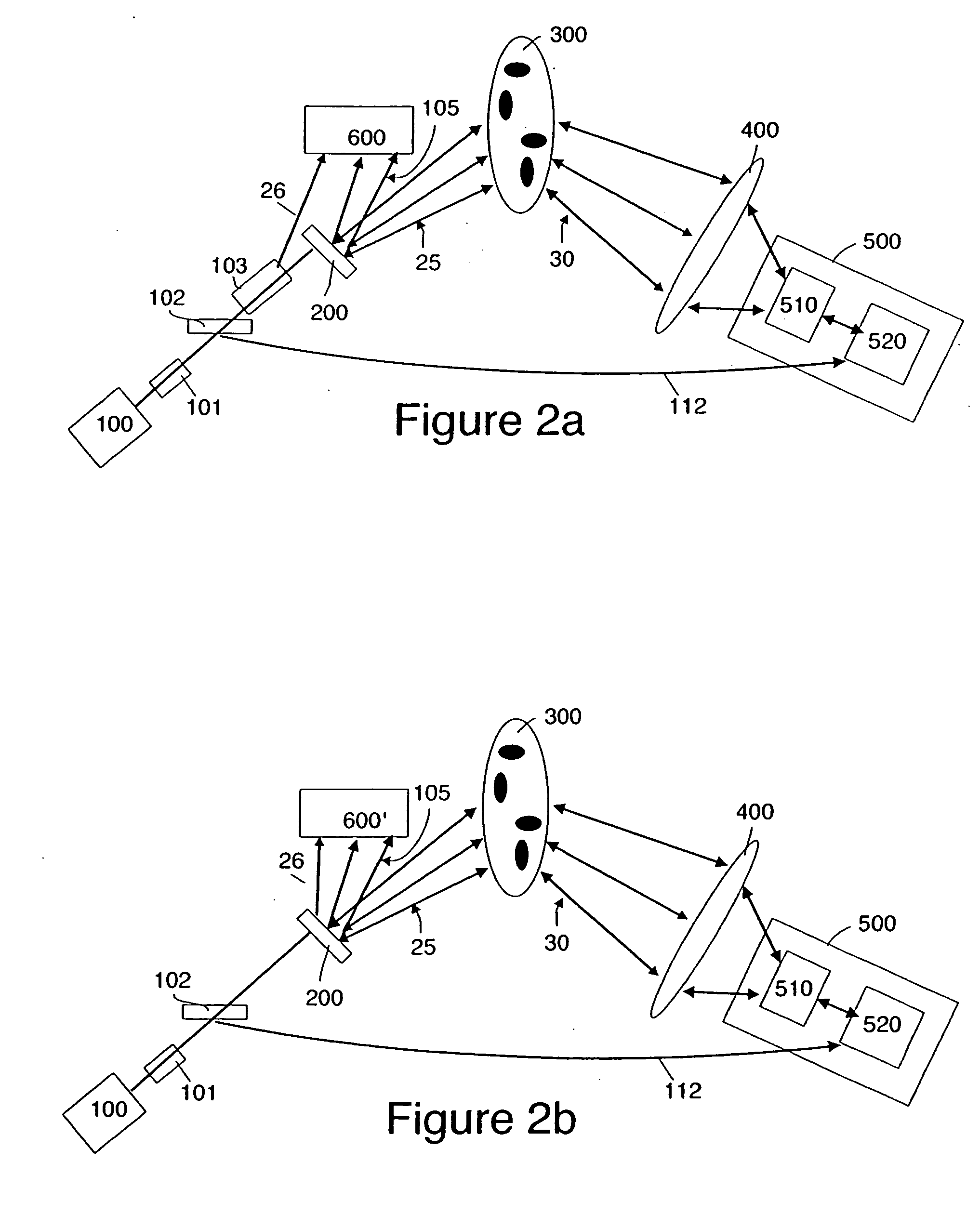Optical remote sensor with differential Doppler motion compensation
a technology of optical remote sensor and doppler, applied in the direction of fluid speed measurement, instruments, measurement devices, etc., can solve the problems of complex attempt to determine the net global motion of components in an ensemble of dynamically moving scattering sites, inhibit the optimum performance of the sensor, and unattractive in many applications, so as to achieve the effect of suppressing noise components
- Summary
- Abstract
- Description
- Claims
- Application Information
AI Technical Summary
Benefits of technology
Problems solved by technology
Method used
Image
Examples
Embodiment Construction
[0020]FIG. 1a is a schematic diagram of the basic system architecture of one embodiment of the presently disclosed technology, utilizing a self-pumped Phase Conjugate Mirror (PCM) in a wavefront-reversal module 500 and a heterodyne detector 600. A laser beam from a probe laser 100, which laser may be implemented by a diode-pumped solid state laser, an argon ion laser, a laser diode or other lasing device, is preferably passed via an optical isolater 101 to an Acousto-Optic (AO) modulator 103. The optical isolater 101 is preferably utilized to prevent reflected beams from re-entering the probe laser 100 which could otherwise cause instability in the probe laser 100. The AO modulator 103 generates a local oscillator (LO) reference signal 26 that is offset in frequency from the signal beam for heterodyne detection of a received signal 105 by a heterodyne detector 600. As will be seen, the received signal 105 reflects off the surface of beam splitter 200 in this embodiment. Those skille...
PUM
 Login to View More
Login to View More Abstract
Description
Claims
Application Information
 Login to View More
Login to View More - R&D
- Intellectual Property
- Life Sciences
- Materials
- Tech Scout
- Unparalleled Data Quality
- Higher Quality Content
- 60% Fewer Hallucinations
Browse by: Latest US Patents, China's latest patents, Technical Efficacy Thesaurus, Application Domain, Technology Topic, Popular Technical Reports.
© 2025 PatSnap. All rights reserved.Legal|Privacy policy|Modern Slavery Act Transparency Statement|Sitemap|About US| Contact US: help@patsnap.com



